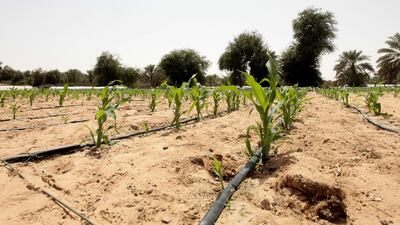Within the space of living memory, Abu Dhabi has gone from a pearl-diving centre to one of the great emerging cities of the world. By 2030, it is estimated that the city’s population will double from its present 1.5 million, and stand as one of the region’s business, arts and cultural and tourism hubs.
This growth has been largely built around Abu Dhabi’s abundant natural resources, mostly oil and natural gas. But the resources that will be critical to sustaining this rapid economic and population growth are utilities that we almost take for granted nowadays: water and electricity.
As the population and the emirate’s industrial base grow, the demand for water and electricity has been increasing rapidly. In fact, the peak demand for electricity has almost doubled over the past 10 years, putting tremendous pressure on the emirate’s electricity grid.
Maintaining secure and efficient supplies during peak periods is becoming increasingly challenging, and it is estimated that cooling and air-conditioning are responsible for 65 per cent of the peak electricity load in the summer months.
Likewise, Abu Dhabi’s total consumption of desalinated water – which accounts for all tap water in the Emirate – reached 1.1 billion cubic metres in 2013, and even if conservation meaures are enacted, it is expected that demand will increase to more than 1.5 billion cubic metres by 2030.
Groundwater and recycled wastewater are the other sources of water and the sector is working hard at using as much recycled water as possible for irrigation purposes.
In all, it is estimated that UAE residents use between 250 and 550 litres of water and 20-30 kilowatt hours (kWh) of electricity a day, compared to the international average of 170 to 300 litres and 15 kWh per day respectively.
Water and electricity are inextricably linked in our emirate. Most of our water is produced by what are called cogeneration plants: power plants that generate electricity and use the waste steam to desalinate the water that comes through our household taps.
The scale, effort and resources needed to maintain Abu Dhabi’s supplies of water and electricity – and ensure plentiful supplies for growth and future generations – are staggering.
Currently, the majority of the emirate’s electricity is generated from natural gas.
To reduce its reliance on gas, Abu Dhabi is also investing in renewable energy sources, with current plans for about 500MW of solar power to be generated through photovoltaic, wind turbines, and concentrated solar power sources. It is hoped that waste-to-energy plants will provide a further 300MW of generating power by 2021.
Other carbon-free or low-carbon technologies include the building of nuclear power plants . Starting in 2017, a total of four reactors will be commissioned, one a year up to 2020 providing the UAE with a total of 5.6GW of energy for 60 years.
However, simply growing capacity is not enough. Conservation is a critical part of a sustainable water and electricity sector.
Water and electricity are precious resources, we must find ways of using our resources as efficiently as possible if we are to meet the growing needs of our people, our businesses and our industries while providing capacity for future generations. That way, we’ll be able to build an Abu Dhabi that is the jewel in the crown of the Middle East.
Nick Carter is the director general of the Regulation and Supervision Bureau, the independent regulatory body of Abu Dhabi’s water, wastewater and electricity sector.

